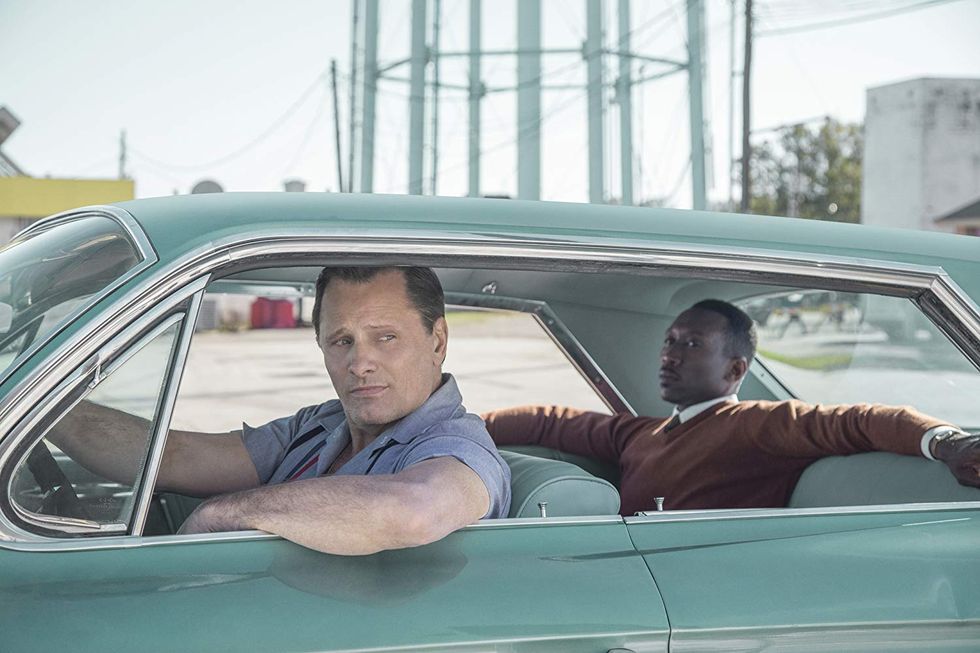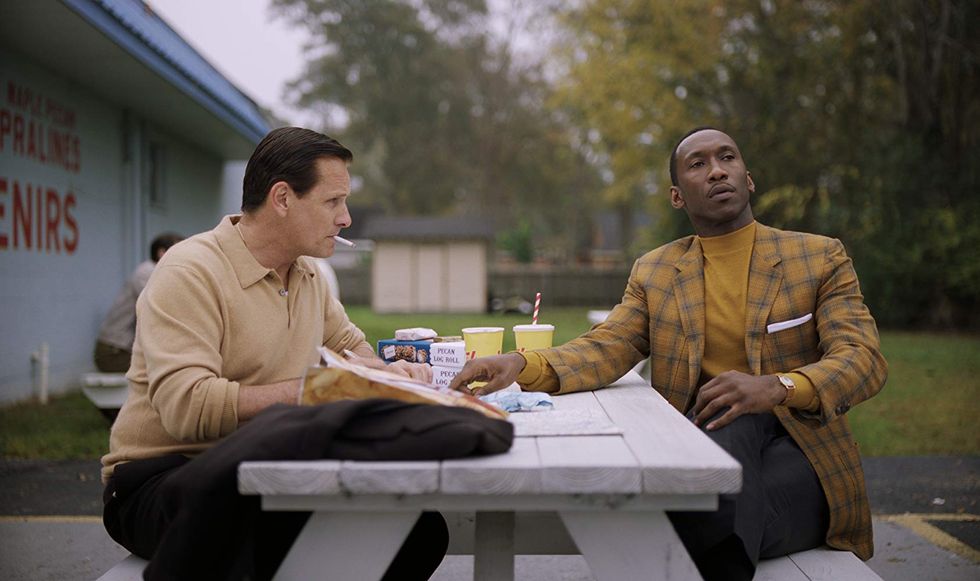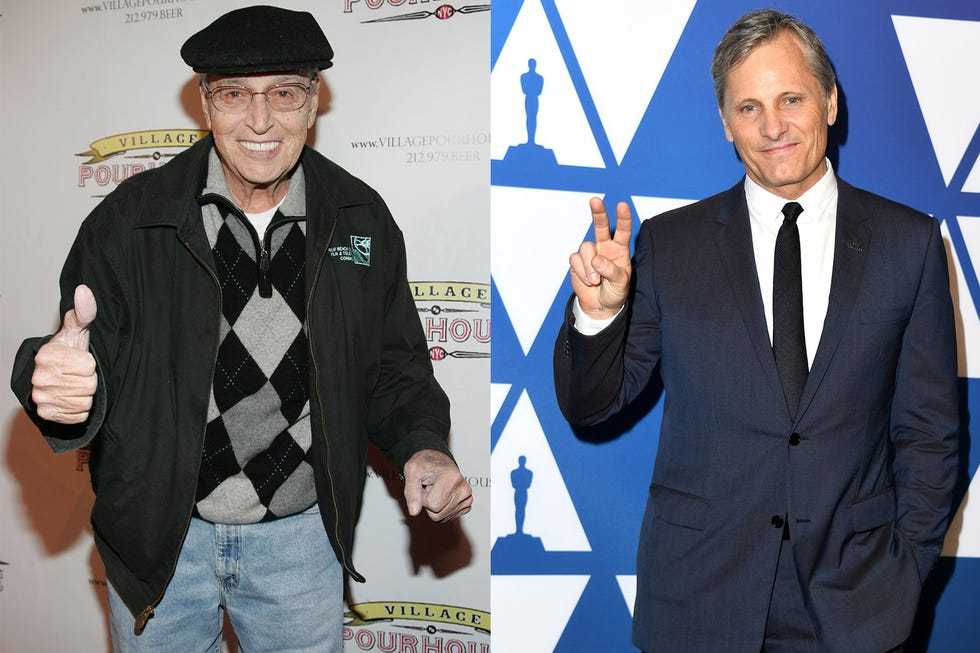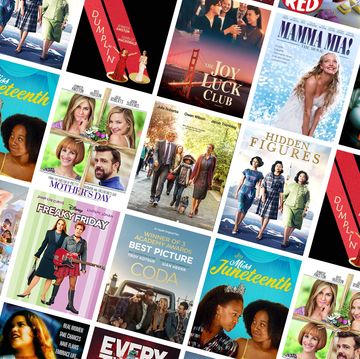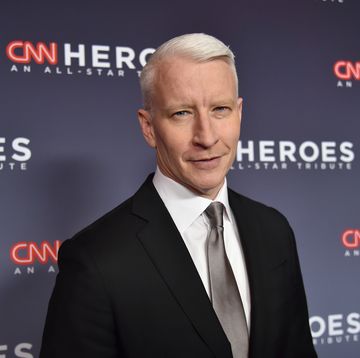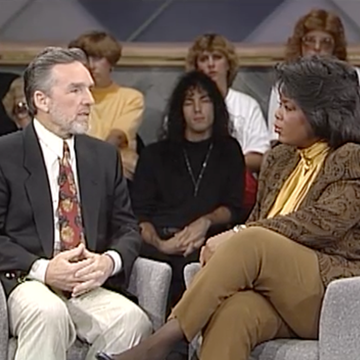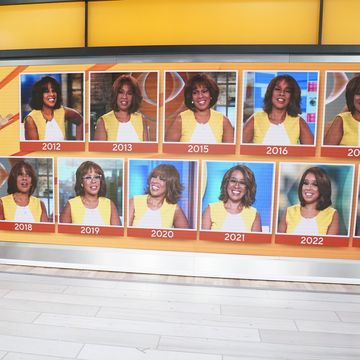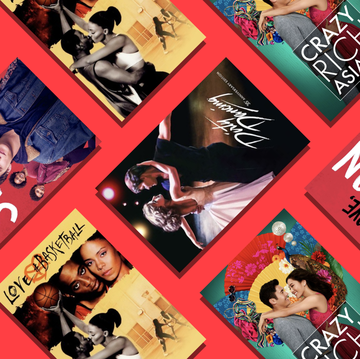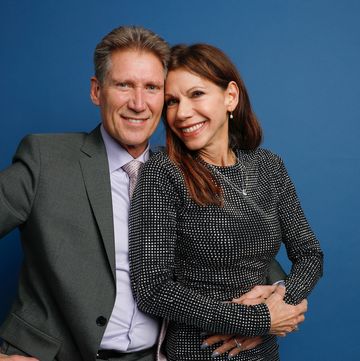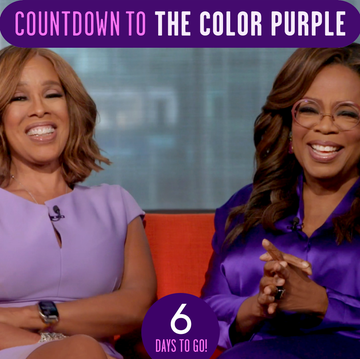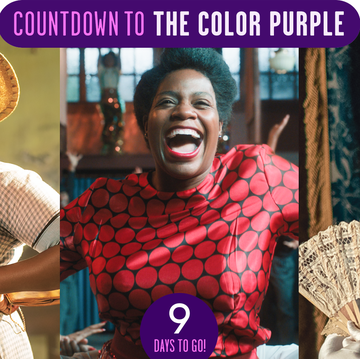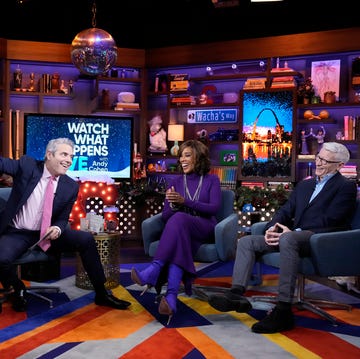For months, Green Book has been considered a 2019 Oscars frontrunner. And on Sunday night, the 2018 movie won three out of its five Academy Award nominations—including Best Picture, Best Supporting Actor, and Best Original Screenplay. Even more impressive than the acting and its award wins—is the fact that it’s based on actual events.
Director Peter Farrelly’s period dramedy recounts a real-life road trip through the deep South during the turbulent 1960s and Jim Crow era. The passengers of Farrelly’s theatrical vehicle are acclaimed pianist Dr. Don Shirley (Mahershala Ali) and Frank Anthony Vallelonga, who is affectionately referred to as Tony Lip (Viggo Mortensen) for his gift of gab. The audience is asked to ride shotgun while watching this odd couple in a turquoise Cadillac Sedan DeVille deal with racism and segregation.
Green Book is reminiscent of the classic 1989 movie Driving Miss Daisy starring Morgan Freeman and Jessica Tandy. Only this time, a white man is behind the wheel (Vallelonga) and a Black man is giving directions from the backseat (Dr. Shirley). The two men couldn't be more different, both in their ethnic makeup and in their beliefs. Yet through the redemptive power of music, they form an unexpected friendship in the midst of racism and segregation. This joy ride and tour of the South is all at once entertaining, uncomfortable, and, most importantly, necessary, prompting praise from filmgoers for its realistic depiction of the racial unrest of the '60s.
However, Green Book is not without its criticism. Dr. Shirley’s family has referred to the film as a "symphony of lies," admonishing Farrelly for whitewashing Dr. Shirley's legacy and not consulting them about the script. Not to mention, some critics have panned the movie as racially tone-deaf and accused Farrelly and scriptwriters of perpetuating a "white savior" stereotype, a term used to describe a cinematic device commonly used in film to depict a white character rescuing people of color from a difficult situation.
"I feel bad about that, I wish we could have done more," Farrelly admitted to Newsweek about not reaching out to Dr. Shirley's surviving family members. "To be honest, the people looking into it just didn’t find them—they screwed up...I’m sure there will be some criticism that [the film] is not authentic because it’s not dark enough. But that’s not my style. We didn’t want to preach to the choir."
The notion of Green Book surrounded in a cacophony of controversy is valid, and partly the reason why some are wondering whether there's any truth to the story. For example, did Dr. Shirley really hire Vallelonga as his driver? Was Vallelonga actually as racist as he appears in the film? Did the pair remain friends after their road trip? All reasonable questions.
Fortunately, we have the answers to those questions and more, thanks to statements from Dr. Shirley's living family members and Vallelonga's son, Nick Vallelonga, who is also one of the co-writers for the movie.
"I wanted the feelings to come from the truth because the story is so amazing that the truth is enough," Vallelonga's son told TIME. "I felt that we could not make up a scene in this movie."
Read on to discover how the story of "two guys in the car" and their relationship became one of 2018's most talked-about movies and an Oscar favorite.
Here's why Dr. Shirley hired Vallelonga to be his driver and bodyguard.
As audiences saw in the film, Vallelonga was a bouncer at the Copacabana night club in New York City. Dr. Shirley, a musical prodigy born in Pensacola, Florida, actually started playing the piano at the age of 2. Before preparing for his very own concert tour in 1962, Dr. Shirley, like many music fans of that time, was privy to the violence and racial slurs inflicted upon other Black musicians when they went to the South to perform.
One of those legendary artists was Nat King Cole, who was famously beaten on stage by the Ku Klux Klan of the Confederacy in 1956 in Birmingham, Alabama, just six years before Dr. Shirley would make his trek to the state. As a result, Dr. Shirley hired the Bronx-born Vallelonga to be his chauffeur and security while on tour.
According to Time, Vallelonga's son heard the road trip stories firsthand from both his father and Dr. Shirley. He also kept the letters his father sent to his wife, Dolores Vallelonga, which serve as the film's source material.
He maintained that he received his dad and Dr. Shirley's blessings before turning these tales and letters into a script, with just one stipulation from Dr. Shirley: to not publish anything until after his death.
"'You should put in everything your father told you, and everything I told you,'" Vallelonga recalled Dr. Shirley saying. "'You tell exactly the truth, but you’re going to wait until I pass.'"
The movie is based on an actual Green book.
From 1936 to 1966, Harlem postal worker Victor H. Green published a survivor's manual titled The Negro Motorist Green Book: An International Travel Guide, which explains where the film gets its name. Green compiled the book as a resource for Black travelers to cope with discrimination in whites-only "sundown towns," which is used to described the cities that displayed racist signs cautioning African Americans to not travail after dusk in their towns. The book was also implemented to aid people of color in finding safe lodging, gas stations, and restaurants while journeying throughout the U.S., particularly in the South.
"The 'Green Book' tried to provide a tool to deal with those situations," Lonnie Bunch, director of the Smithsonian’s National Museum of African American History and Culture, told The New York Times in August 2010. "It also allowed families to protect their children, to help them ward off those horrible points at which they might be thrown out or not permitted to sit somewhere. It was both a defensive and a proactive mechanism."
Vallelonga was racist in real life.
In the first half of the film, Vallelonga is vilified, to a certain degree, in how he refers to Black people and his refusal to drink behind a group of Black servicemen in one particular scene. He also treats African Americans as a monolith, giving in to certain racial stereotypes, like the idea that all African Americans eat chicken and that they only listen to certain music. Near the end of the movie, the road trip changes Vallelonga's perspective, something that his son confirmed with Time .
"My dad was a product of the times and his environment—and that’s not an excuse for anything," Vallelonga said. "All that went away after he became friends with Dr. Shirley, and after this crazy trip they took together and what happened to them. Now, it wasn’t just something you heard about—he saw it, he witnessed it."
Later, in the Time interview , Vallelonga added: "This particular trip really, really affected him and changed him. It changed the way he brought us up, that everyone is equal and everyone is the same."
Dr. Shirley and Vallelonga were friends in real life—but that depends on who you ask.
After the heartwarming scene in which Dr. Shirley goes to the Vallelonga family's home for Christmas dinner, Green Book fans were left wondering if Dr. Shirley and Vallelonga remained friends.
"Everything changed from that moment on," said Vallelonga's son, maintaining that their "friendship grew deeper" and that his father "listened to Dr. Shirley."
However, Dr. Shirley's family insisted that they weren't close at all.
"It was an employer-employee relationship," Patricia Shirley, sister-in-law of Dr. Shirley, told Shadow and Act in an exclusive interview. She said that her brother-in-law preferred to keep things professional and that was "the only kind of relationship that [Dr. Shirley] ever had with any of the people he worked with."
After the closing credits rolled in Green Book, Dr. Shirley went on to play Carnegie Hall in 1971. Both Vallelonga and Dr. Shirley died in 2013, within five months of each other.
Here's the one thing that isn't true in the movie.
The film isn’t exactly a faithful retelling, as the road trip took place in a span of a year and a half. The movie depicts it lasting for two months. This is the only creative license Vallelonga's son, Nick, said the filmmakers took. Other than the amount of time they spent in the car together, he suggested the narrative is completely accurate from his recollection of events.
"I think that’s why it resonates—because it’s truthful," he said.
For more ways to live your best life plus all things Oprah, sign up for our newsletter!

Michelle is the Culture & News Writer for OprahMag.com, where she writes about celebrities (she considers herself an expert on Beyoncé and Reese Witherspoon), plus the latest in pop-culture news, binge-worthy TV shows, and movies. The transplanted Southerner turned ambitious New Yorker lives her best life by listening to hip-hop and Pod Save America, watching The Office on repeat, quoting Oprah-isms, eating dessert before dinner, and avoiding avocado. Seriously, she doesn’t get the hype.
It should say, “Michelle is the former Culture & News Writer for Oprahmag.com...”

